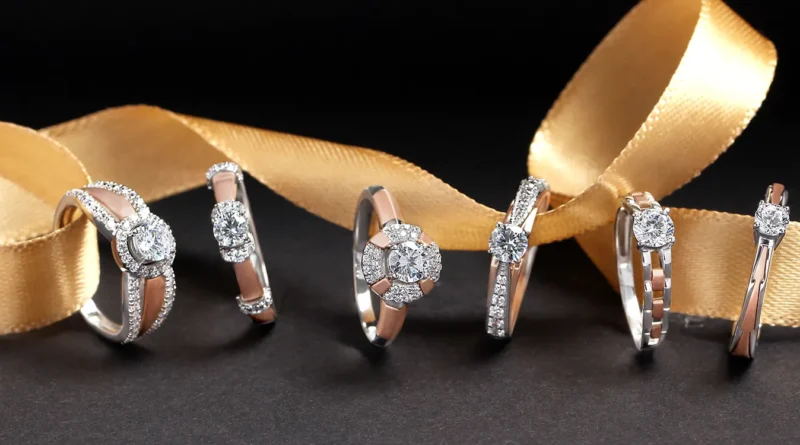What carat of lab-grown diamond is best?
When it comes to selecting an Lab grown Diamonds INDIA, one of the most important factors to consider is the carat weight of the diamond. Carat weight refers to the size of the diamond, with one carat being equivalent to 0.2 grams. While the allure of a larger diamond is undeniable, choosing the right carat weight involves balancing personal preference, budget, and the overall look of the ring. This blog will delve into the considerations for selecting the best carat weight for a lab-grown diamond, helping you make an informed decision that aligns with your desires and requirements.
Understanding Carat Weight:
Carat weight measures the size of a Lab grown Solitaires and is one of the key factors in determining its overall value. It is important to note that carat weight does not directly equate to the diamond’s physical dimensions, as the cut and shape of the diamond can affect how large it appears. For example, a well-cut diamond can appear larger than a poorly cut one of the same carat weight.
Factors to Consider When Choosing Carat Weight:
- Budget Considerations: One of the primary factors influencing your choice of carat weight is your budget. Lab-grown diamonds are typically 20-40% less expensive than mined diamonds of the same size and quality. This price advantage allows you to consider larger diamonds within your budget. However, it’s essential to set a budget and determine how much you are willing to spend on the carat weight of the diamond while ensuring that other factors like cut, color, and clarity are also considered.
- Personal Preferences: Personal preference plays a significant role in choosing the right carat weight. Some people prefer a more substantial diamond that makes a bold statement, while others might opt for a more modest size that fits their style and lifestyle better. Consider what you and your partner find most appealing and practical. It can be helpful to try on various sizes to see what looks best on the hand and feels right.
- Ring Size and Finger Proportions: The size of the wearer’s finger can impact the perception of the diamond’s size. For instance, a larger carat diamond might look proportionate on a larger finger, while a smaller carat diamond might be more fitting for smaller hands. It’s crucial to consider how the diamond will complement the overall look of the engagement ring and the person wearing it.
- The “Wow” Factor: If making a statement is important to you, opting for a larger carat weight can achieve that effect. Larger diamonds tend to attract more attention and can be more striking. However, it’s important to balance this desire with practicality and budget constraints.
- Future Considerations: Think about the future when selecting the carat weight. While a larger diamond may be desirable now, consider how it will fit with future jewelry purchases or lifestyle changes. For instance, if you plan to add matching wedding bands or other pieces, ensure the chosen carat weight complements these future additions.
Practical Tips for Choosing Carat Weight:
- Opt for a Near-Carat Weight: Lab-grown diamonds, like natural diamonds, are available in various carat weights, and sometimes opting for a near-carat weight can be a smart move. For example, choosing a diamond that is just under a whole carat (e.g., 0.90 carats instead of 1.00 carat) can offer significant savings while still looking nearly as large.
- Consider the Total Carat Weight of a Setting: If you prefer a ring with multiple stones, such as a halo or trilogy design, the total carat weight of the ring might be a better measure than a single stone. In such settings, the combined weight of all diamonds can create a substantial visual impact without the need for a single large stone.
- Focus on Cut Quality: A well-cut diamond can maximize the appearance of its size. Prioritize cut quality to ensure that the diamond reflects light beautifully, which can enhance its overall presence and make it appear larger and more brilliant.
- Think Beyond Carat Weight: Remember that carat weight is just one of the Four Cs (Cut, Color, Clarity, and Carat Weight) that determine a diamond’s overall quality and appearance. Sometimes, a slightly smaller diamond with excellent cut and clarity can be more impressive than a larger diamond with lower quality.
- Consult with a Jeweler: Working with a reputable jeweler can provide valuable insights into the best carat weight for your preferences and budget. A knowledgeable jeweler can help you compare diamonds and understand how different carat weights will affect the ring’s appearance.
Conclusion:
Choosing the best carat weight for your lab-grown diamond involves a blend of personal preference, budgetary considerations, and practical factors. While a larger carat weight can make a bold statement, it is essential to balance this with the overall look of the ring, the wearer’s finger size, and future considerations. Lab-grown diamonds offer a cost-effective way to achieve a larger size while still maintaining high quality.
Ultimately, the best carat weight is the one that feels right for you and your partner, fits within your budget, and meets your aesthetic desires. By considering all these factors and working with a trusted jeweler, you can select a lab-grown diamond that perfectly symbolizes your love and commitment while also reflecting your unique style and preferences.

